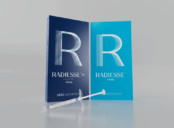All You Need to Know About Dry Skin Rash

Introduction:
Dry skin rash is a common skin condition that affects millions of people worldwide. It manifests as a red, itchy, and flaky rash that can be bothersome and uncomfortable. In this article, we will provide an in-depth overview of dry skin rashes, including their types, causes, measurements, differences, historical significance, and the positives and negatives of various treatments.
1. Understanding Dry Skin Ras

Dry skin rash, also known as xerosis cutis, occurs when the skin fails to retain moisture, leading to dryness, inflammation, and the development of a rash. It can affect people of all ages and is more prevalent during dry weather or in individuals with certain skin conditions.
2. Types and Prevalence:
There are several types of dry skin rashes, each with unique characteristics and causes. Common variations include atopic dermatitis, contact dermatitis, seborrheic dermatitis, and psoriasis. Different subgroups experience these rashes, ranging from infants and children to elderly individuals. Moreover, the article will highlight popular treatments and remedies for each type of rash.
3. Quantitative Measurements:
Quantifying the impact of dry skin rashes can provide an understanding of their magnitude. By examining statistical data regarding the prevalence, treatment success rates, and financial costs associated with managing dry skin rashes, readers can gain a comprehensive understanding of the condition’s effects on individuals and healthcare systems.
4. Comparing Different Dry Skin Rashes:
While dry skin rashes share common symptoms, each type has unique characteristics that differentiate them from one another. This section will delve into the differing causes, locations on the body, and patterns of the rash for each specific type. By understanding these differences, individuals will be better equipped to identify their specific condition and seek appropriate treatment.
5. Historical Context of Dry Skin Rashes:
Throughout history, various treatments and remedies have been employed to alleviate dry skin rashes. This section will examine the historical evolution of treatments, including traditional remedies, herbal remedies, and modern medical interventions. It will discuss the advantages and disadvantages of each approach and shed light on the cultural significance attached to specific treatments.
Conclusion:
Dry skin rashes can be a persistent and uncomfortable condition for many individuals. Understanding the different types, causes, measurements, and historical significance of these rashes can help individuals navigate the complexities and seek effective treatments. By staying informed and utilizing the knowledge gained from this article, readers will be better equipped to manage their dry skin rashes and improve their overall quality of life.





















